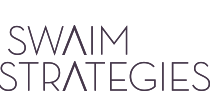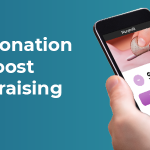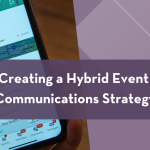Using Email Marketing to Drive Event Attendance: 4 Tips
Hosting events—whether big or small, virtual, hybrid or in-person—is an effective way to bring your organization’s community together, create memories and drive donations for your cause. But for your events to be successful, you need to make sure people are attending them! Thus, you need to have an airtight marketing strategy.
You likely already have a wide variety of tools to rely on for your marketing efforts, from social media profiles and your nonprofit’s website to direct mail and physical marketing materials like flyers and posters. But email is by far one of the best tools your event marketing team has at its disposal. According to OptInMonster:
- 99% of email users check their email every day
- 61% of people prefer to be contacted by brands through their email
- The nonprofit sector has the highest email open rate (20.4%) of any industry
What does this mean for your nonprofit? Email is a great way to reach your supporters and drive event attendance. Let’s jump into four tips to create engaging email campaigns so that you can boost attendance at your next event.
1. Plan to send more than one email.
If you were planning a surprise party for a family member, you’d likely send out invitations a few weeks in advance, then remind people about the party a few days before via text message or social media.
You need to take a similar approach when planning nonprofit events—it won’t be enough to tell your supporters about your event one time! To get the best results, you should send multiple messages to get their attention, encourage them to register for your event long before it starts, then continue to remind them leading up to and on the big day.
Of course, you’ll send different messages at different stages of the promotion process. Here are some examples of the types of email content you might plan out based on how much time you have before the day of your event:
- Months before the event: With plenty of time to go until your event, send out a save-the-date message with your registration form. For virtual attendees, send a digital calendar invite with all the event details and relevant links. This way, on the day of your event, they’ll be automatically reminded to attend and have access to all of the resources they need to do so.
- Weeks before the event: In the weeks leading up to the event, continue to promote your registration form. You can also drum up excitement for your event by teasing exclusive information and offers. For example, you might announce a special early bird registration discount or highlight your most exciting auction items in your promotional materials—whatever will catch your supporters’ attention and get them looking forward to your event.
- Days before the event: A few days prior to the event, send out event reminders and important details for attending the event to those who registered, such as dress code or parking information. This way, these essential details will be at the forefront of your supporters’ minds when the big day comes around.
- On the day of the event: On the big day, send out one final email reminding supporters that today’s the day. Let them know that they power your work and that you can’t accomplish your goals without them. Additionally, mention how much fun the event will be!
Savvy nonprofits will take their email strategizing one step further and prepare post-event emails. After all, it’s great to get a supporter to attend your fundraising event, but it’s even better to have that supporter feel a lasting connection to your organization that drives them to get involved with your work more in the future.
Use these personalized post-event emails to thank your supporters for their time and contributions, and encourage them to keep up with your nonprofit and its other upcoming events. These emails will do wonders for your donor stewardship efforts.
2. Write eye-catching subject lines.
There’s a lot riding on your subject lines. In fact, Zippia asserts that 47% of email recipients decide to open your mail based on the subject line. Therefore, it’s well worth the little bit of extra time it takes to shine up your event email subject lines.
A good subject line could mean the difference between someone opening your email, reading about your event, and registering—or earning your message a one-way ticket to the trash folder.
Use these tips to craft interesting and open-worthy subject lines:
- Keep it short and sweet. Research shows that the optimal length for a subject line is around 40 characters or seven words. Use this precious real estate to tease the information in the email, encouraging people to click through and read the content.
-
- Example: Save your seat at our annual gala!
- Use the recipient’s name. Just like salutations in donor thank-you letters, personalizing email subject lines will catch a recipient’s eye and make them feel like the message is tailored to them.
-
- Example: Jerry, we want to see you at our 5K!
- Try using emojis. Emojis offer a little visual flavor to subject lines, getting them to pop off the screen. If appropriate, a party hat or smiley face could go a long way in encouraging someone to click on your message.
-
- Example: 🎉 Did someone say charity auction? 🎉
To improve your own subject lines, familiarize yourself with plenty of examples. You can check out roundups of examples online, and pay attention to your own inbox to see which subject lines grab your interest and which have you quickly selecting “delete.” More importantly, test out different styles of subject lines in your email communications. See which styles your audience seems to engage with and which ones they tend to ignore.
3. Make your content fun and engaging.
Once your subject line pulls a recipient in, you need to make it worth their while! Get creative with your content, ensuring it’s informative and enjoyable to read all the way through. Doing so will help you steer clear of spam and trash folders, and help you engage your supporters and get them on board with your event.
Here are some tips for writing stellar email content:
- Keep paragraphs short. Your email recipients don’t open your messages expecting (or wanting) to read a novel. Keep this in mind and apply brevity as you create marketing content. Break up paragraphs into two or three sentences to keep the content quick to read through and easy to digest.
- Include striking multimedia elements. Do you have high-quality images from last year’s dance-a-thon? How about a recent podcast episode in which your founder talks about the importance of your annual community banquet? Feature these multimedia elements in your emails to break up blocks of text and engage your audience in multiple ways.
- Use the inverted pyramid structure. The inverted pyramid is a metaphor for how written information should be structured—with the most important information coming first. This way, if someone stops reading partway through, they’ve already picked up on your main points. Use the inverted pyramid structure by explaining at the top of the email the who, what, where, when, and why of your event.
Take your email content a step further by leveraging email templates that inspire you. For example, you might use a nonprofit newsletter template that sets up an inverted pyramid structure and leaves room for multiple images. Working off of a template can help you start your emails strong and ultimately turn out a better product that will engage your audience. But make sure you customize the template for your needs to ensure it stands out from other emails your recipients are sure to receive.
4. Include strongly-worded CTAs.
To truly drive event attendance, your event promotion emails should include effective calls-to-action (CTAs). A CTA is simply a short phrase or sentence that encourages someone to act.
CTAs need to be well-worded and compelling to catch people’s interest and get them to follow through with the desired action. Here are a few examples of effective CTAs:
- Take a stand against cancer today by registering for our 5K!
- Make more dreams come true—donate to The Hope Fund now.
- Ohio shelter animals need your help. Buy your gala tickets today.
Include a CTA in each email with a link to a landing page on your website or event microsite. These landing pages may include your registration page or donation page. Every email will likely have a different CTA depending on where you are in the process of promoting your event. For example, you might use your CTA in your initial save-the-date email to encourage people to register for your event, whereas your email on the day of the event might encourage registrants to follow your organization on social media for live updates.
To make your CTAs truly effective, optimize the landing pages where you want your supporters to take action. According to Cornershop Creative’s roundup of nonprofit web design best practices, this will involve simplifying conversion forms, optimizing your pages for mobile devices, and ensuring the site is accessible to visitors of all abilities.
Planning successful nonprofit events can be challenging, especially when it comes to driving attendance. However, with a strong email marketing campaign, you can engage your audience, deliver practical information and encourage both registration and attendance.
Use these tips to fine-tune your email marketing strategy. To take your strategy to the next level, consider working with a nonprofit web design company that offers campaign implementation services. These agencies can help you coordinate all aspects of your marketing efforts, from your emails to your website landing pages.
Good luck!






